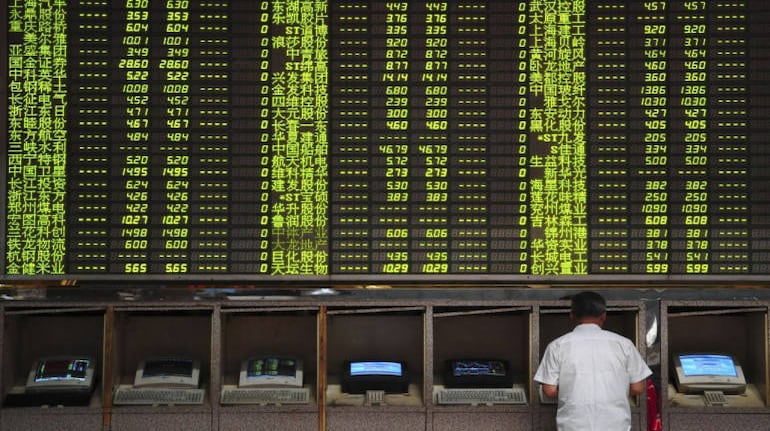



Madhuchanda DeyMoneycontrol Research
The slogan "Hindi-Chini bhai bhai" was as shortlived as it was cloying, meeting its death in the 1962 debacle. Since then, bonhomie has been the last thing on the minds of leaders on the two sides, but the trade relationship has burgeoned. China is India’s largest trading partner with the total value of trade at $71.5 billion, surpassing the value of Indo-US trade by more than $6.8 billion. India runs a substantial trade deficit with the Chinese, though its financial dependence on its neighbour is less than in the case of the United States, large chunks of whose sovereign debt is owned by China.
Especially when soldiers are eyeball-to-eyeball at the border, the composition of this imbalance between the two Asian giants is less significant than the fact that it exists, and China’s trade dominance could be a source of disruption if war breaks out.
Blame China for the size of the overall deficit
With a slowing Chinese economy, India’s exports to China have been falling at a CAGR (compounded annual growth rate) of 6.8% in the past four years. Imports from China, nevertheless, have surged, growing at a CAGR of 4.1%. Consequently India’s trade deficit with China has widened to $51 billion in FY17 from $38.7 billion in FY13.
In fact, out of the total trade deficit of $108 bn (in FY17), China’s share was 47%.
Why China matters to India and not vice versa
Indian local businesses & consumers have more reasons to worry than our exporters. China’s share in India’s exports stands at a minuscule 3.7% (India’s largest market for exports is the U.S. with a share of 15.3%). However, China’s share in India’s imports stands at 16% which is much more than the share of the second largest exporter, which is U.S. at 6%.
In fact it is important to remember, that for China, while India is important (with a share of 2.6% in its exports), it nevertheless ranks ninth, with the top slot being occupied by U.S. with a share of 18% in Chinese exports.
What do we export to China?
India’s list of exports to China is dominated by primary products, mostly in the nature of raw materials such as cotton, copper, organic chemicals etc. As the Chinese economy rebalances to become more consumer-led, there will be a further fall in exports.
So India has got to diversify its exports to cater to affluent Chinese consumers.
What do we import from China?
We seem to encounter a “Made in China” tag in everything from idols and toys to machinery.
Some home-grown industries have been crying foul for a while, whose markets have been flooded with imports from the neighbour. In many of the genuine cases some kind of protection has been granted.
So far in close to 93 products from China, anti-dumping duty is in force. This includes chemicals and machinery items imported from China. The other Chinese products on which India has imposed this duty include steel and other metals, fibres and yarn, rubber or plastic, electric and electronics and consumer goods.
In addition, 40 cases concerning imports from China have been initiated by the Directorate General of Anti-Dumping & Allied Duties. So a section of the industry, can breathe relief for a while.
Hence, for selected plays like steel, tyre, chemical etc. this nationalistic protection can lend short to medium term upside.
India’s imports from China range from consumer electronics such as phones and laptops to nuclear machinery. Other major imports include plastic items, industrial goods, and vehicles. Over half of India’s electronic imports come from China. India’s toy market is dominated by Chinese firms as well.
India’s increasing dependence on imports from China for many key raw materials (mostly intermediates and some active pharma ingredients) that go into the making of a number of essential drugs is also worth taking a note of.
While many countries in the world run a lopsided trade relation with China, thereby granting it the unchallenged status of the manufacturing hub of the world, for India, the current situation is clearly a wake- up call.
Since a large number of companies import primary raw materials from China, markets should keep these industries/companies under watch. While in the world today economics clearly takes precedence over politics, the criticality of the situation should result in constructive action.
Indian government has to give a fillip to domestic manufacturing and walk the talk on “Make in India” that will go a long way in de-risking the economy from such one-country sourcing and generate jobs, a dire need of the hour. While most lessons in life are learnt during a crisis, this is no different. Indian policymakers should take note, but in the meanwhile, markets, trading at close to 20X FY18 earnings, need to factor in dark clouds ahead of silver linings.
Discover the latest Business News, Sensex, and Nifty updates. Obtain Personal Finance insights, tax queries, and expert opinions on Moneycontrol or download the Moneycontrol App to stay updated!
Find the best of Al News in one place, specially curated for you every weekend.
Stay on top of the latest tech trends and biggest startup news.